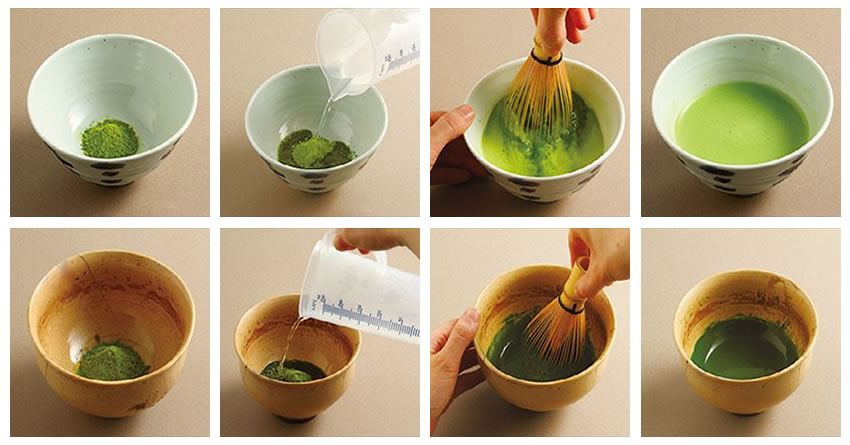
Enjoying matcha, the beverage
Light, fragrant usucha
When people talk about drinking matcha, what they usually have in mind is usucha: powdered matcha whipped into fine foam with a tea whisk. Compared with the koicha described below, usucha uses less matcha and has a light, refreshing flavour. Matcha is not only for the formal tea ceremony—it can be enjoyed casually. Even beginners can make a fine cup of usucha if they're careful about the proportions of tea powder to hot water and the temperature of the water. Here are tips on making a tasty sip at home.
Rich, thick koicha
Served mainly in the tea ceremony and at other formal occasions, koicha is prepared in a single bowl from which guests partake in turn. This tea uses a generous amount of matcha powder dissolved in a small amount of hot water. The blend is worked into a thick liquid for maximum enjoyment of its body and fragrance. Note that, given its thick texture, koicha is best made with mellow, top-grade matcha rather than varieties that may have bitter or astringent notes (see the fine points on the page "Matcha Vol.1"). Here's how to make koicha at home.
Usucha
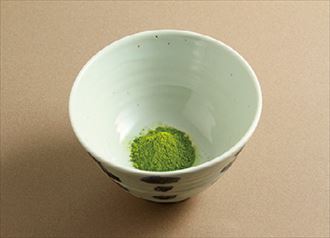
1 Fill a tea bowl or café au lait bowl with hot water to warm it and dip the tea whisk into the water. Discard water, wipe the bowl dry, and place 1 to 1⅓ tsp sifted matcha in it.
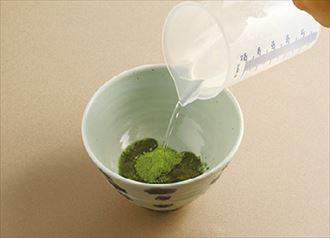
2 Measure up to 70 ml freshly boiled water in a measuring cup, and pour gently over the matcha in the bowl.
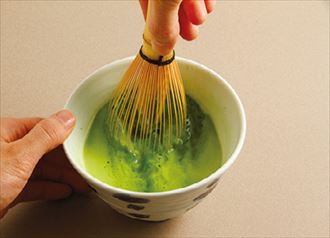
3 Use the whisk to blend tea and water. Next, whip briskly back and forth at the center of the bowl, as if scooping up from the bottom, to produce foam.
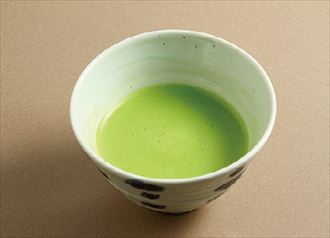
4 Move whisk slowly over the surface of the tea to break the foam into finer bubbles. Gently lift the whisk, shaping the foam into a small mound. The tea may also be whisked without producing foam.
Koicha
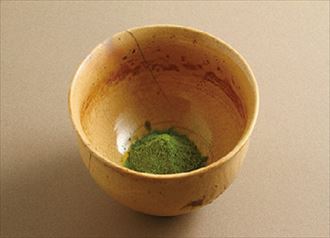
1 Fill a tea bowl or café au lait bowl with hot water to warm it, and dip the tea whisk into the water. Discard water, wipe the bowl dry, and place 1¼ Tbsp sifted matcha in it.
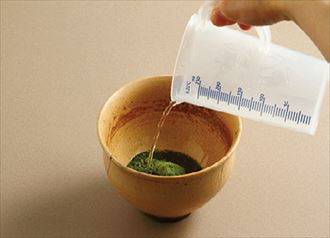
2 Pour freshly boiled water into a measuring cup. Start by adding 30 ml water to the tea, pouring gently into the bowl. Since this is a small amount of water, work quickly so it doesn't have time to cool.
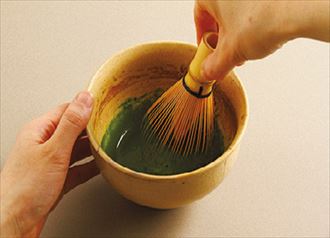
3 Use the whisk to blend tea and water. Work them into a paste, flexing the whisk bristles against the bottom of the bowl. Add another 15 to 25 ml hot water, pouring it down the whisk. Continue whisking.
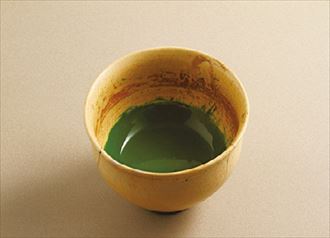
4 When the tea has been blended sufficiently, gently raise the whisk. The result will be thick, lustrous, and full-flavoured.
Source " KATEIGAHO INTERNATIONAL Japan EDITION Spring / Summer 2017 vol.39 "
Special thanks to Marukyu Koyama-en
Photography by Sadaho Naito
Text contributions by Sang Mi Kang and Aki Hirayama
Food preparation by Kyoko Imai, Yuki Uenoyama, and Yuko Koyama
Styling by Yuko Magata


Comments